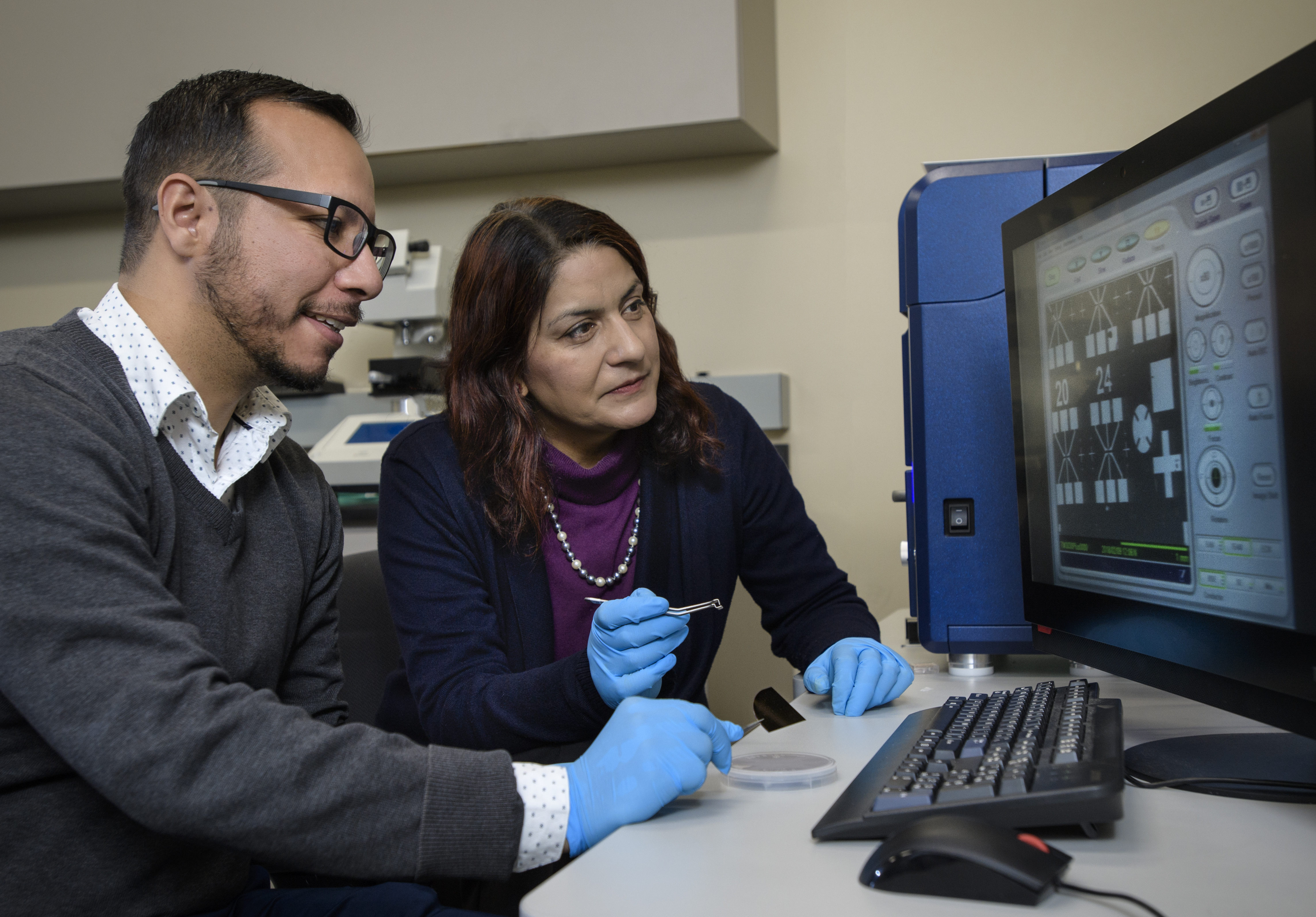
DENTON (UNT), Texas - Anupama Kaul, director of the University of North Texas College of Engineering’s PACCAR Technology Institute, and her research group have developed ultra-high performance optoelectronic devices based on molybdenum disulfide – or MoS2 – which shows excellent performance compared to prior studies. Kaul’s Ph.D. student, Gustavo Lara Saenz, is the lead author of the study, which was funded with a $450,000 grant from the Air Force Office of Scientific Research. The work has been published in Nature’s Scientific Reports and includes collaborators Goran Karapetrov, professor of physics at Drexel University, and his graduate student James Curtis.
“We have these multi-layer stacks of MoS2 membranes that are contacted on either side using metals, molybdenum in this case,” said Kaul, who also is the PACCAR professor in engineering and a professor in the departments of Materials Science and Engineering and Electrical Engineering. “The use of molybdenum is unique because other research typically has reported on gold with titanium as the contact metals, but molybdenum gives a very small barrier at the two interfaces, the so-called Schottky Barrier.”
Kaul’s group is the first to experimentally report that molybdenum gives a small Schottky barrier, which makes it easier for charge carriers to be collected efficiently at the molybdenum contacts and is just one reason the device yields a higher responsivity.
“The responsivity is basically a figure of merit that tells you how sensitive a device is at collecting optical energy and then transducing that into an electrical signal,” Kaul said. “If someone’s measuring the electrical current and I shine light on the device at a particular incoming power, the higher responsivity device would show a higher current compared to the background. Our responsivity is about 10,000 times higher than prior reports based on multilayer MoS2. It was high across the entire spectrum of light wavelengths, from the visible spectrum – starting at 400 nanometers – to the near infrared – up to 1100 nanometers, making it broadband.”
Kaul says the other factors that can influence this collection efficiency are likely due to the suspended nature of the MoS2 membrane structures, which minimizes the scattering of the electrons from the substrate surface.
“When these electrons experience a lot of scattering, they kind of zigzag and it diminishes their ability to make it to the other side efficiently,” Kaul said. “The fact that these are suspended structures minimizes the scattering events because the electrons are not necessarily hitting other surface defects or impurities from the substrate.”
Kaul says the high performance devices could have implications for broadband photodetectors from the visible to near infrared that are useful for the United States Department of Defense or for NASA’s uncooled imaging platforms.
About PACCAR Technology Institute
PACCAR Technology Institute is a unique, non-traditional center for research and educational excellence which works on a variety of research topics related to cutting edge engineering research problems that span multiple disciplines. As an interdisciplinary research unit of the University of North Texas, PACCAR brings together academic researchers and industry experts from various physical and social sciences and engineering disciplines.




